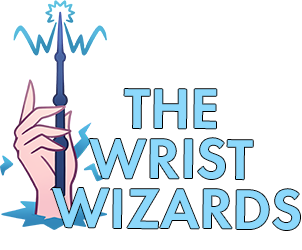How Do I Know If I Have Sorcerer’s Thumb (de Quervain’s Tenosynovitis)
Does your thumb ache? Did you tweak it a few weeks ago, but the pain is lingering. You might be dealing with sorcerer’s thumb.
It can be scary and confusing not knowing how to handle this condition. You scare yourself by asking questions like: “When will this ever go away? Will this ever get better? ”
In this article, we’ll talk about how people develop sorcerer’s thumb and how to assess yourself for the injury.
What is sorcerer’s thumb?
At the side of your thumb, there are several muscles which are responsible for extending, and abducting (moving out) your thumb. These attach further up the side of your forearm. When these muscles are overused due to work (or play) tasks, the tendon begins to change. The sheath of tissue that surrounds the tendon can become irritated and painful, which is when that little ache becomes known as sorcerer’s thumb.
How does the condition develop?
Sorcerer’s thumb develops from overuse. If you are habitually flicking the thumb out (for example hitting the space bar) or flicking the wrist inward (e.g. flicking the mouse inward or chopping up with a knife), it puts you at a higher risk for developing this condition. It could also develop after a direct trauma to that area.
What are the symptoms of Sorcerer’s Thumb?
Swelling and pain at the base of your thumb
numbness in the thumb area
snapping feeling when moving thumb
How do I test myself for Sorcerer’s Thumb?
Disclaimer: A full test should be performed by a trained physician or physiotherapist for proper evaluation.
The Finklestein Test
Make a fist around a thumb.
Move wrist downards towards the direction of your little finger. This is called ulnar deviation.
A positive test is pain coming up the arm from thumb.
What Can I Do About It?
The best results come from a combination of splints, NSAIDs, and strengthening. If you are going to do anything, start by picking out a great thumb splinted wrist brace and wear it for a few weeks. You can find our recommendation here. Studies have found that taking NSAIDs like ibuprofen along with wearing a brace leads to greater improvement of the symptoms of sorcerer’s thumb.
Second (and arguably more important) is managing load to the affected tendons. This includes strengthening the affected muscles as much as you can tolerate. You have to reduce whatever activity is aggravating the thumb/wrist or the condition will not get better. This will reduce the load placed on the tendons. Next, you need to strengthen the affected muscles within your pain tolerance. This will allow your tendons to accept more load before feeling more pain. See here for some suggested exercises to strengthen that region.
Summary
Sorcerer’s Thumb is irritation of the thumb extensor tendons most likely due to repetitive stress of the region. While it can be treated non-surgically, it needs to be addressed as soon as symptoms begin with an individualized plan. While the tips we’ve given here can help, having a professional check it out and consider your unique situation is always going to be your best choice.



